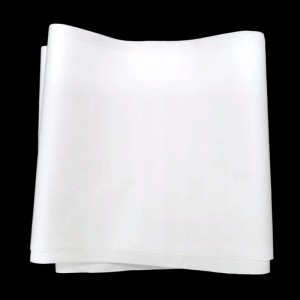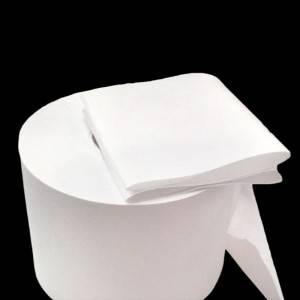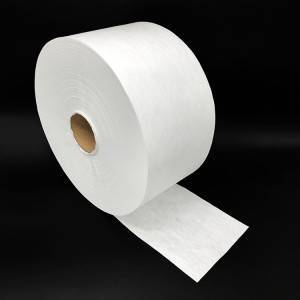What is a meltblown cloth?The melt blown non-woven fabric manufacturer Jin Haocheng to introduce to you, the main content is as follows:
Melt blown polypropylene based fabric with fiber diameter of 1 to 5 microns.Many voids, fluffy structure, good folding resistance.This unique structure of the microfiber makes the number of fiber per unit area and specific surface area are increased.
So that the meltblown cloth has good filtration, shielding, heat insulation and oil absorption performance.It is suitable for air and liquid filtration materials, heat insulation materials, absorption materials, facial mask materials, heat preservation materials, oil absorbent, wipes and other fields.
Application scope of melt-blown cloth
Medical and health cloth: operating gown, protective clothing, disinfectant wrapping cloth, masks, diapers, women's sanitary napkins, etc.
Home decoration cloth: wall cloth, table cloth, bed sheet, bedspread, etc.;
Cloth for clothing: lining, adhesive lining, flocculant, shaping cotton, all kinds of synthetic leather, etc.
Industrial cloth: filter material, insulating material, cement packing bag, geotextile, coated cloth, etc.
Agricultural cloth: crop protection cloth, seedling cloth, irrigation cloth, insulation curtain, etc.
Other: space cotton, thermal insulation material, oil absorption felt, smoke filter, tea bag bag, etc.
What is the difference between melt-blown cloth and non-woven cloth?
Melt blown fabric is mainly made of polypropylene with fiber diameter up to 1~5 microns.The machine has a variety of clearance, fluffy structure, good anti - bending performance.Microfiber has a unique capillary structure, which increases the number of fibers per unit area and specific surface area.
The filter material is melt-blown polypropylene microfibers with random distribution of bonding, white appearance, smooth, 0.5-1.0 soft fiber fiber degree of the material, irregular distribution of fiber fibers provides more opportunities for thermal bonding.
The melt-blown cloth has good performance of filtration, shielding, insulation and oil absorption.It can be used as air and liquid filter material, isolation material, absorption material, mask material, heat preservation material, oil absorption material and wiping cloth.
Therefore, the melt-blown gas filter material has large specific surface area and high porosity (≥75%).Under very high pressure filtration efficiency, the product has low resistance, high efficiency, high dust capacity and so on.
Non-woven fabrics are moisture-proof, breathable, flexible, lightweight, non-combustible, easy to decompose, non-toxic, non-stimulating, colorful, cheap, recyclable and so on.The invention takes polypropylene (PP material) particles as raw material, and is continuously produced by high temperature melting, spraying, paving and hot pressing winding.
Non-woven fabric features:
Non-woven fabric has no warp and woof, it is very convenient to cut and sew, light weight, easy shape, like handcraft enthusiasts.
Because it is a fabric that can be formed without spinning, it only needs to analyze and Orient or randomly arrange the short or filament of the textile to form the fiber net structure, and then use the traditional mechanical, thermal bonding or chemical methods to reinforce it.
This is not made by interweaving yarns, but by physically connecting the fibers directly together, so that when you find the name of the stickiness on the garment, you will find that it cannot be pulled out of the thread.Nonwoven fabric has broken through the traditional textile principle, with short process, fast production speed, high output, low cost, wide use, raw materials and so on.
The relationship between nonwoven and spunbonded fabrics:
Spunbonded nonwovens and their ancillary products.A series of nonwovens production processes are represented by spunbonded nonwovens, melt-blown nonwovens, hot-rolled nonwovens and spunlaced nonwovens. Its characteristics are as follows: spunbonded nonwovens is a production method, and most students in the market use spunbonded nonwovens to produce nonwovens.
Non-woven fabric according to the composition of different, polyester, polypropylene, nylon, polyurethane, acrylic acid and so on.Different components have completely different styles of non-woven fabric.Nonwoven fabrics usually refer to polyester binders and polypropylene binders.The styles of the two cloths are very similar and can be recognized by high temperature.
Non-woven fabric refers to the final non-woven fabric formed by the direct use of polymer sheet, short filament or filament fiber airflow placement or mechanical processing, spunlaced, needling or hot-rolled reinforcement.
Soft, breathable new fiber products and flat structure, does not produce lint, tough, durable, soft, silk-like advantages, a material enhanced, but cotton also has a feel, compared to cotton non-woven bags easier to form, and cheaper.
Advantages:
Light weight: polypropylene synthetic resin as the main content of the production of raw materials, specific gravity of only 0.9, only three fifths of China's cotton, with fluffiness, good feel.
Made of fine fiber (2-3D) hot melt bonding forming...The finished product has moderate softness and comfort.
Water repellent, breathable: non-absorbent polypropylene chip, zero moisture, finished water side, by porous, good air permeability, easy to maintain dry cloth 100 kinds of % fiber, easy to wash.
Non-toxic, non-irritating: the product can be more in line with the FDA food grade raw materials for production, does not contain any other student chemical ingredients, performance is relatively stable, non-toxic, no smell, no irritation to the skin.
Antimicrobial and chemical reagents: polypropylene is a chemical blunt material, not borers, can isolate the presence of bacteria and insect erosion in the liquid;Antibacterial, alkali corrosion, finished products do not affect the erosion strength.
Antimicrobial properties: pull with water, mold, bacteria and insects and liquid can isolate the presence of erosion, mildew decay of the products.
Good physical properties: made of polypropylene spinning can be directly spread into a network of thermal bonding effect, the product has better strength than the general staple fiber products, strength has no direction, vertical and horizontal structural strength and similar.
From the point of view of environmental protection: most non-woven fabrics are made of polypropylene, while plastic bags are made of polyethylene.Despite their similar names, the two substances have very different chemical structures.The chemical structure of polypropylene is very stable and difficult to break down, so it takes 300 years for plastic bags to break down.And the chemical structure of polypropylene is not strong, the molecular chain is easy to break, so it is necessary to carry out effective degradation.The non-woven bags proceed to the next cycle in a non-toxic form and can be completely decomposed within 90 days.Moreover, non-woven shopping bags can be reused more than 10 times, and the pollution to the environment after waste is only 10% of plastic bags.
Disadvantages:
Poor strength and durability compared to woven fabrics.
It can't be cleaned like other fabrics.
Since the fibers are arranged in a certain direction, they are easy to crack from a right Angle, etc. Therefore, the focus of improving the production method is to improve the ability to resist splitting.
The above article is organized and published by melt-blown non-woven wholesalers.If you do not understand, welcome to consult us!
Searches related to melt blown non-woven fabric:
Post time: Mar-24-2021



